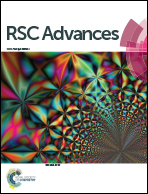Ab initio theory study of laser cooling of barium monohalides
Abstract
The feasibility of laser cooling barium monohalides BaX (X = F, Cl, Br, I) is investigated using ab initio methods with the inclusion of spin–orbit coupling (SOC) effects. Calculated spectroscopic constants for BaF, BaCl, BaBr and BaI are in very good agreement with the available experimental measurements. The results demonstrate that the calculated electronic structure is accurate and can be used to establish the optical scheme of laser cooling. The highly diagonal Franck–Condon factors (FCFs) (BaF: f00 = 0.980, f11 = 0.939, f22 = 0.894; BaCl: f00 = 0.998, f11 = 0.995, f22 = 0.992) between the X2Σ+1/2 and A2Π1/2 states are determined, which are found to be in good agreement with previous theoretical results. The radiative lifetimes (BaF: 39.13–41.20 ns; BaCl: 117.99–110.23 ns) of the A2Π1/2–X2Σ+1/2 transition for the first five vibrational levels show that the A2Π1/2 is a rather short lifetime state. The current study indicates that BaF and BaCl are two good choices of molecules for laser cooling. Therefore, BaI and BaBr are not promising laser-cooling candidates because the FCFs of the A2Π1/2–X2Σ+1/2 transition are off-diagonal. We further propose the three-laser cooling schemes based on the A2Π1/2–X2Σ+1/2 transition for BaF and BaCl.



 Please wait while we load your content...
Please wait while we load your content...